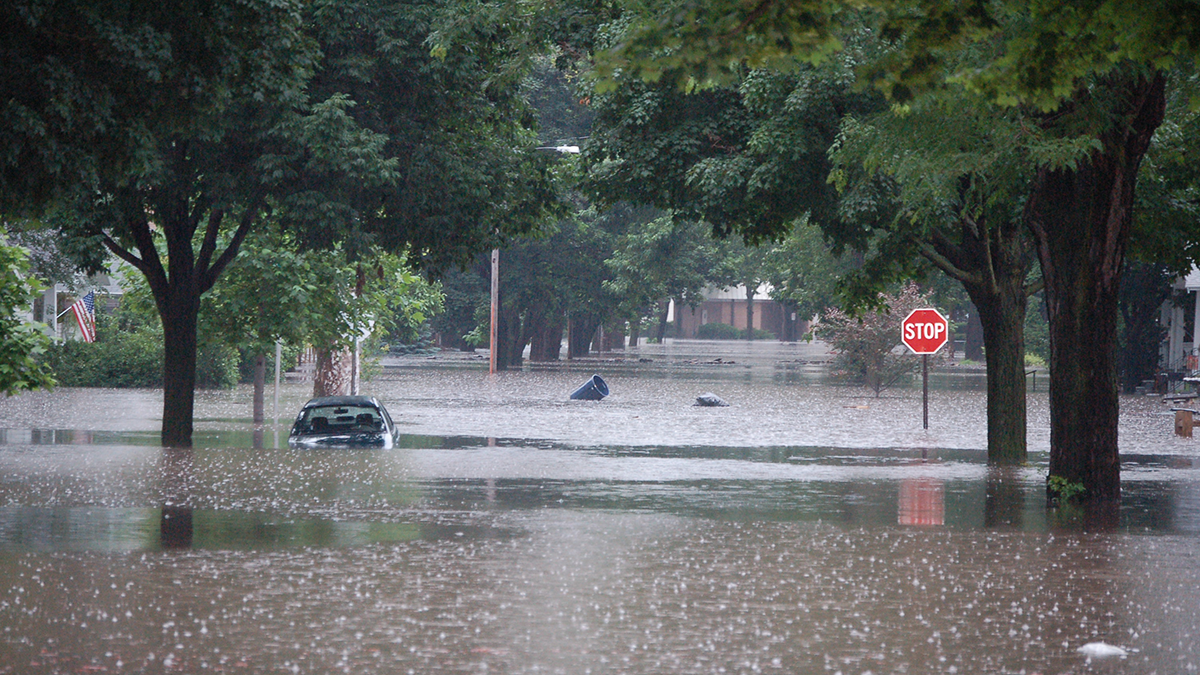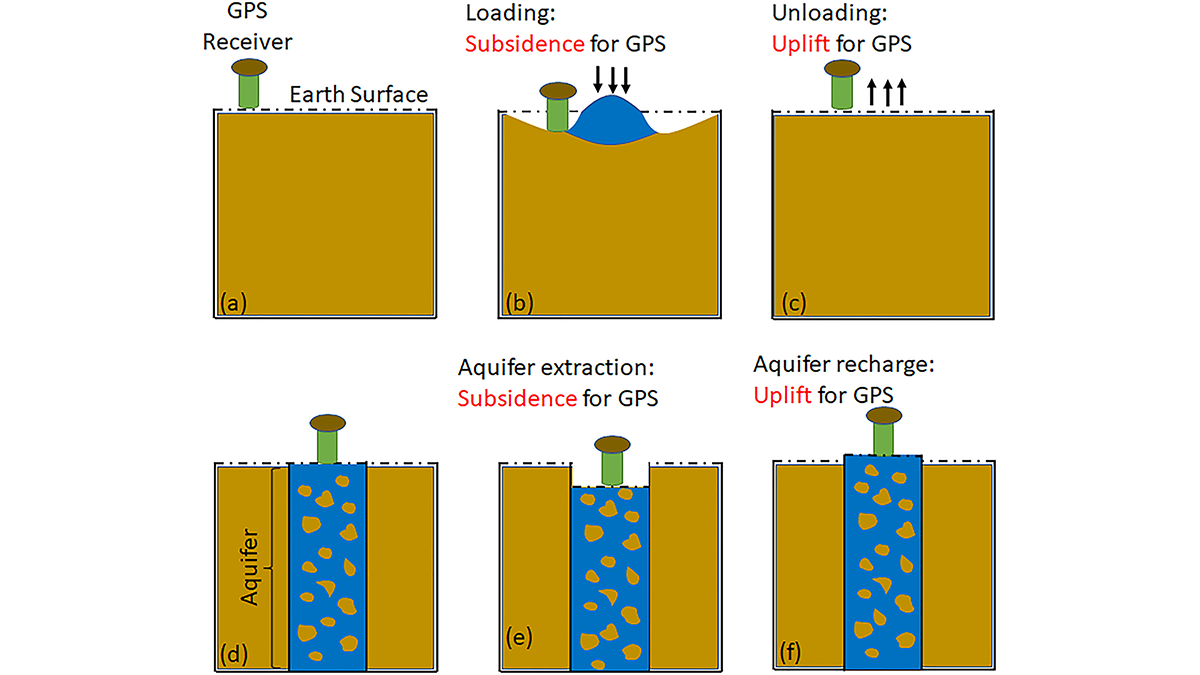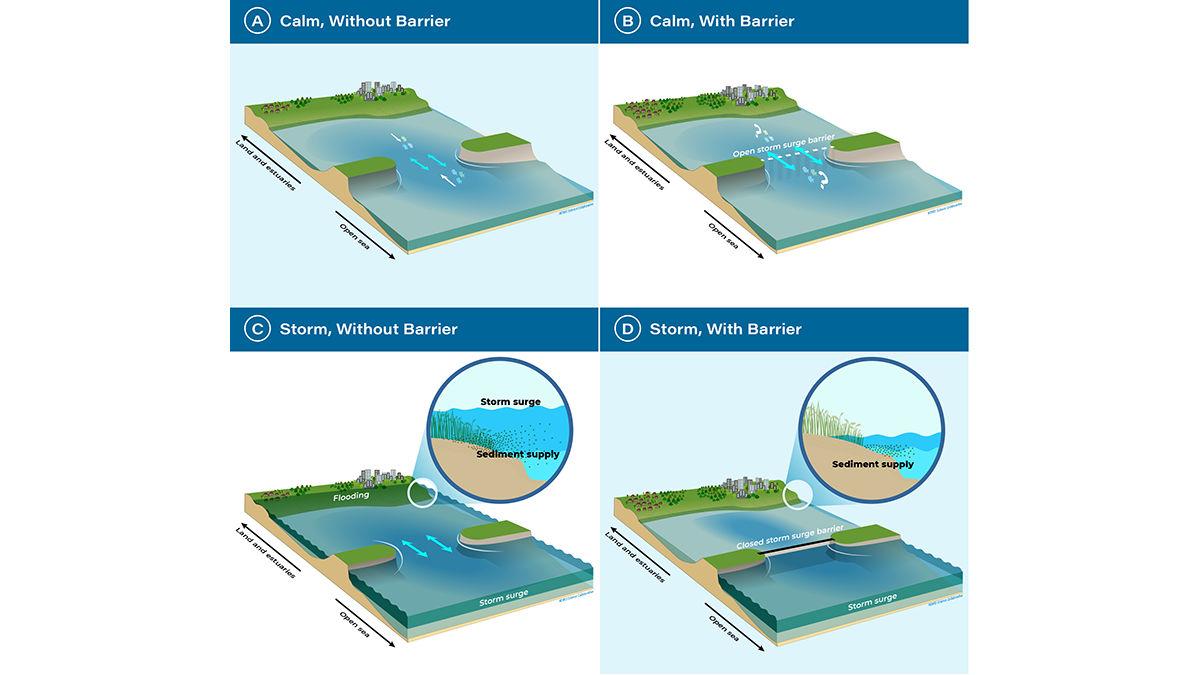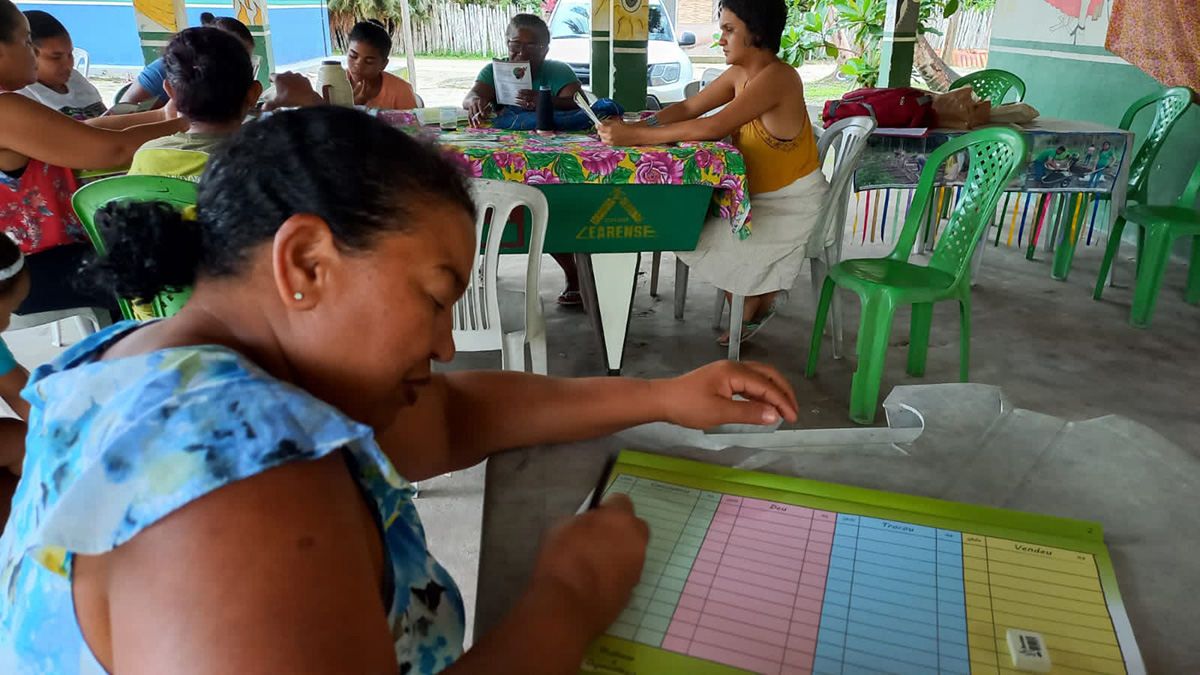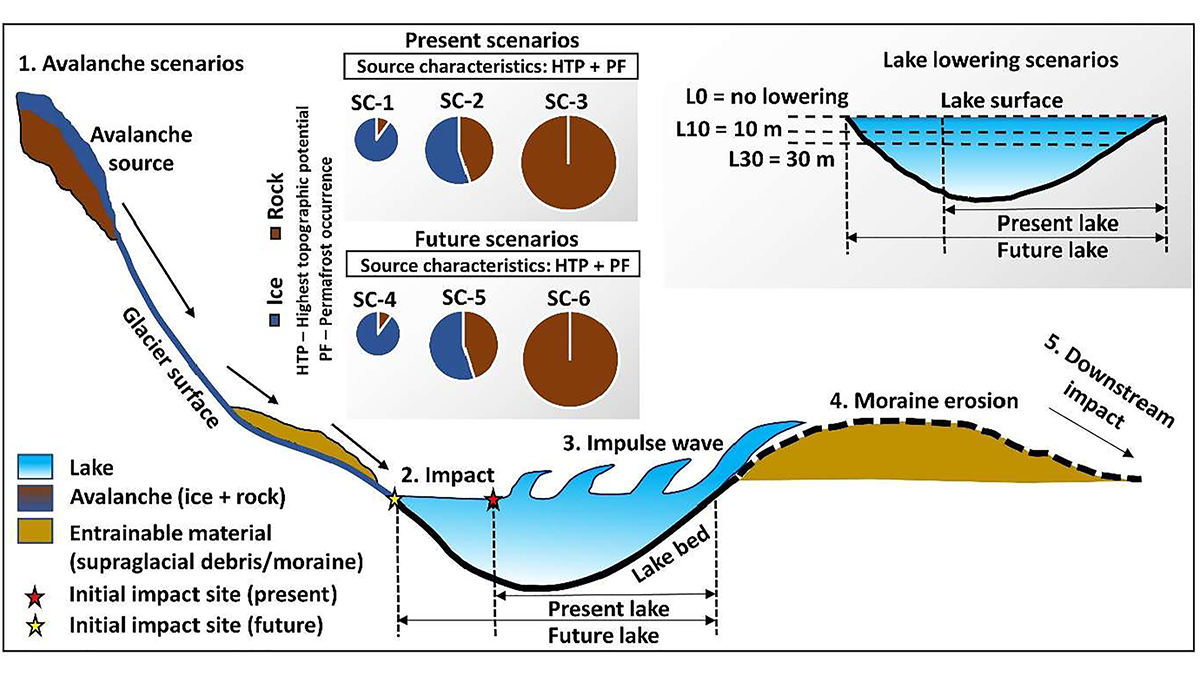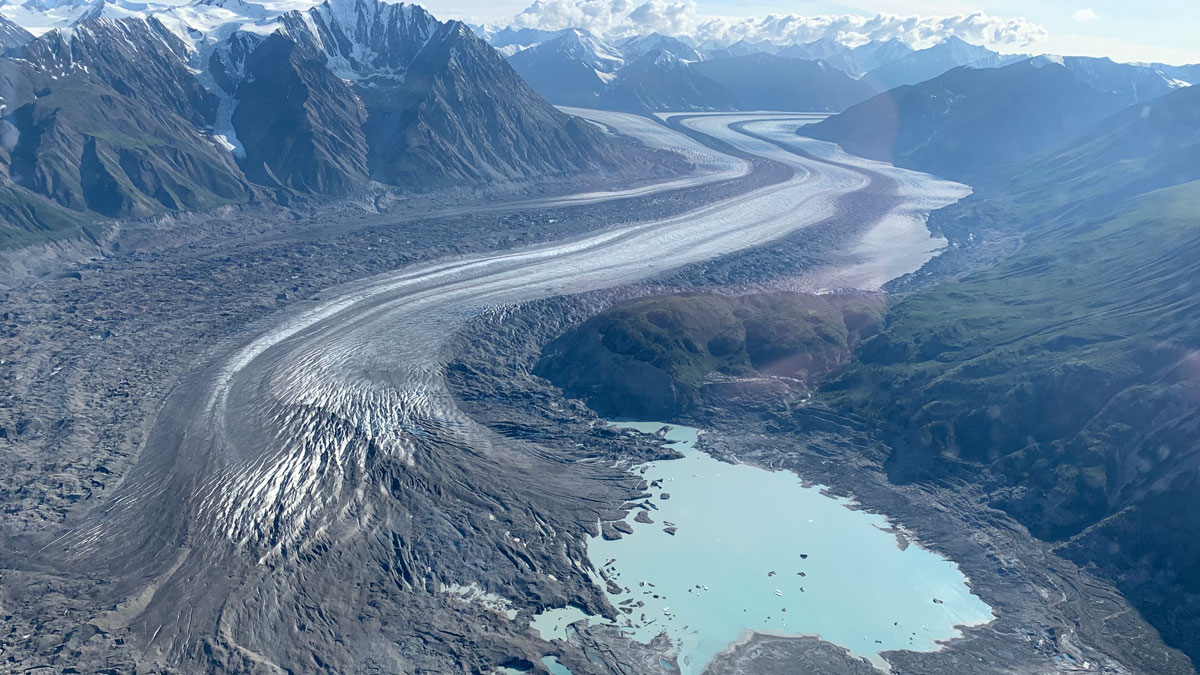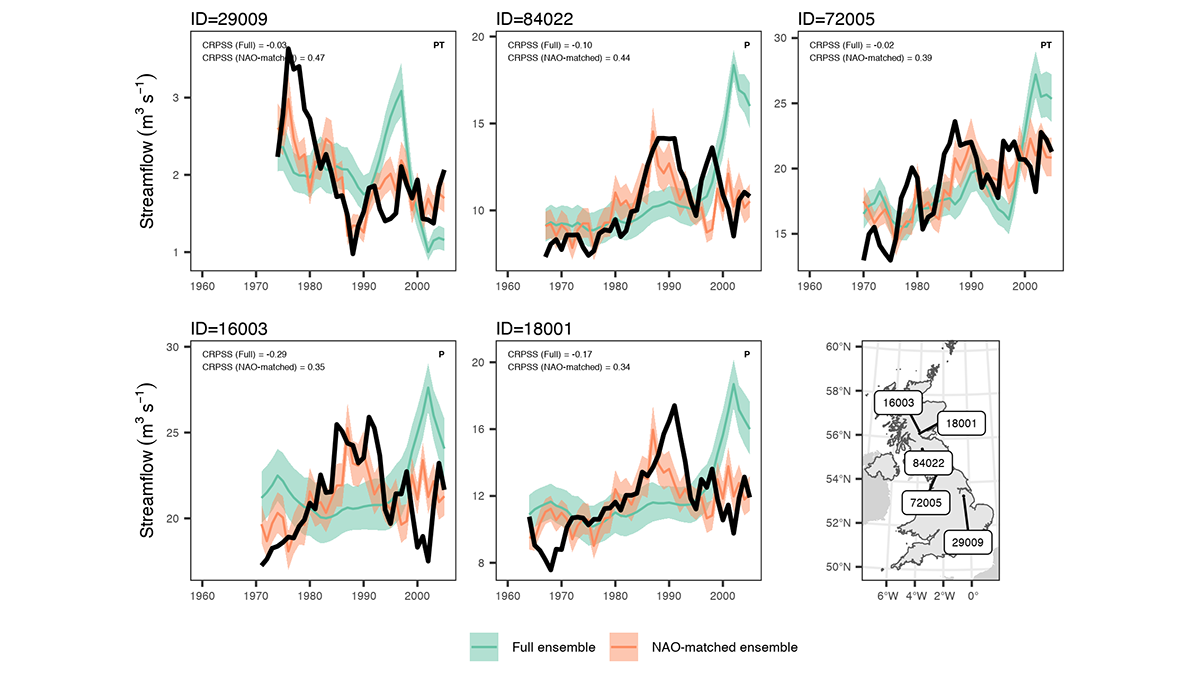To enhance flood modeling, it is imperative to gain a comprehensive understanding of the causative mechanisms and cutting-edge models and tools, while also acknowledging their uncertainties.
floods
Forecasting Earthquake-Induced Floods
Surface-rupturing earthquakes can abruptly reroute rivers when fault scarps function like dams. Researchers have now successfully modeled such an event that occurred in New Zealand.
GPS Observations Sense Groundwater Change in Australia
By exploiting the fact that changes in groundwater cause deformations of the Earth’s surface, GPS receivers are used to detect groundwater changes related to extreme events and to seasonal oscillations.
A Turning Point for Estuaries Worldwide
As estuarine barriers are built in response to sea level rise, flooding, and salinization, more research is needed to better understand their implications for human activities and ecosystems.
Back-to-Back Hurricanes Could Become Common by 2100
New research shows back-to-back hurricanes could strike the United States every few years by 2100.
Como as mudanças climáticas estão afetando as mulheres na Amazônia
Secas e enchentes alteraram radicalmente a agricultura familiar, mas lideranças femininas estão encontrando soluções para si e suas comunidades.
Glacial Lakes Can Unleash Deadly Deluges. How Risky Are They?
Breaches in glacial lake dams threaten millions around the world, and scientists are investigating how climate change might affect that risk.
Artificial Lake-Level Lowering Alleviates Floods in the Himalayas
A new model combining future permafrost degradation and related avalanches demonstrates that artificial lake-lowering could significantly reduce the risk of glacial lake outburst floods.
Lakes Can Change How Glaciers Move
Lakes forming from melted ice can have a big effect on their parent glacier, and more of these bodies of water are appearing under warming conditions.
Predicting Flood Conditions in the Next Few Years
Multiyear flood predictions are possible for watersheds in which the magnitude and frequency of flooding can be related to an atmospheric pressure see-saw in the North Atlantic region.

